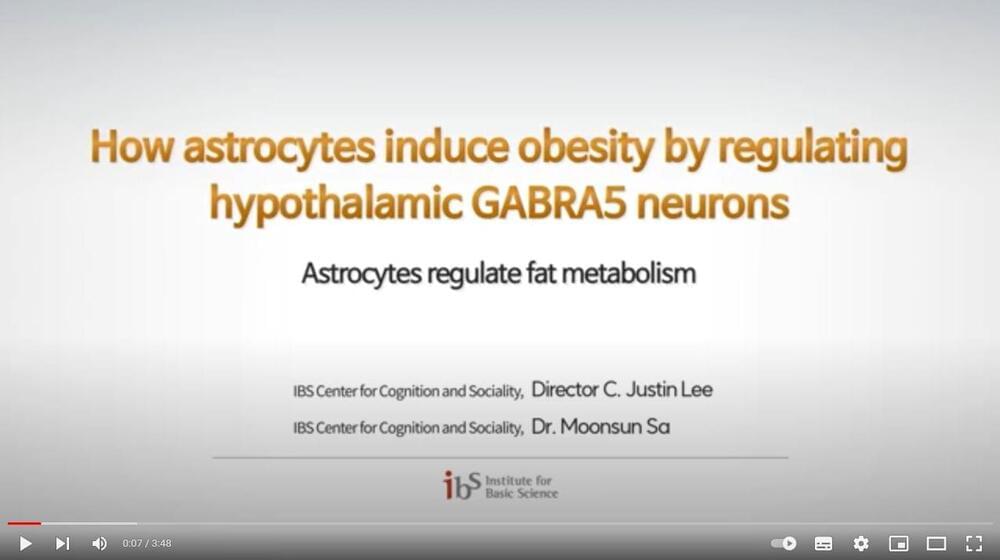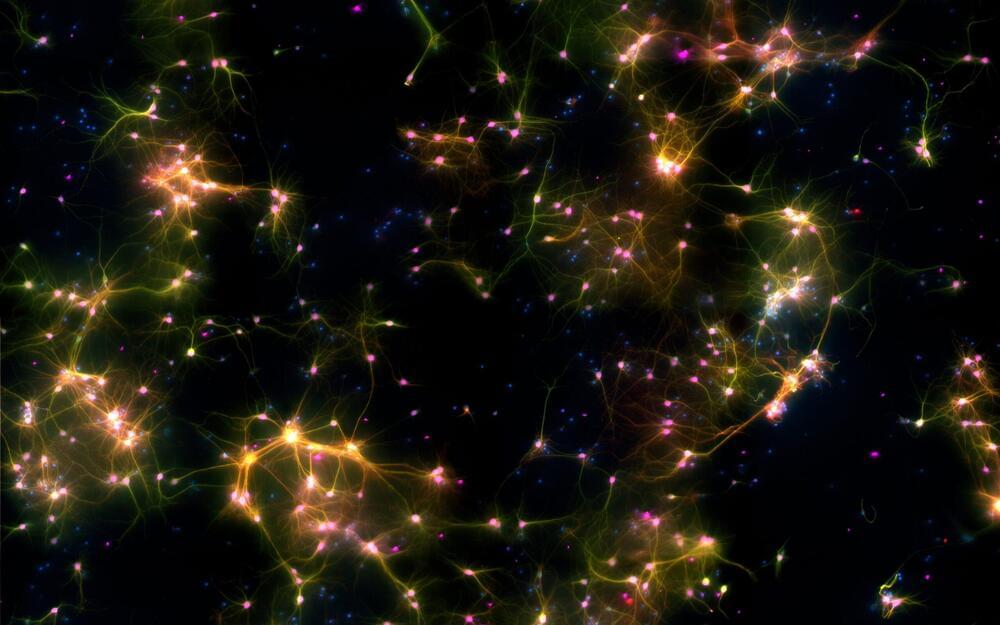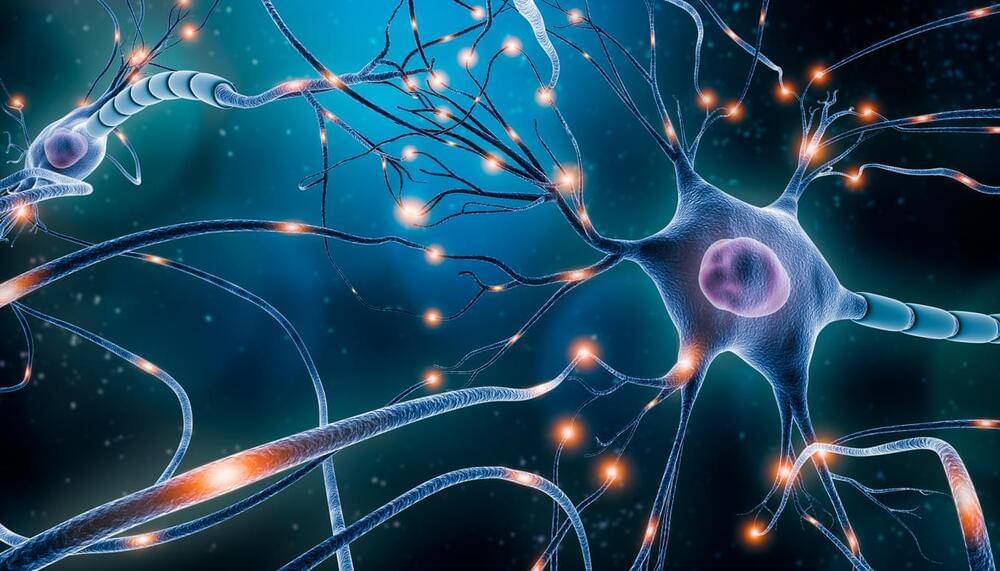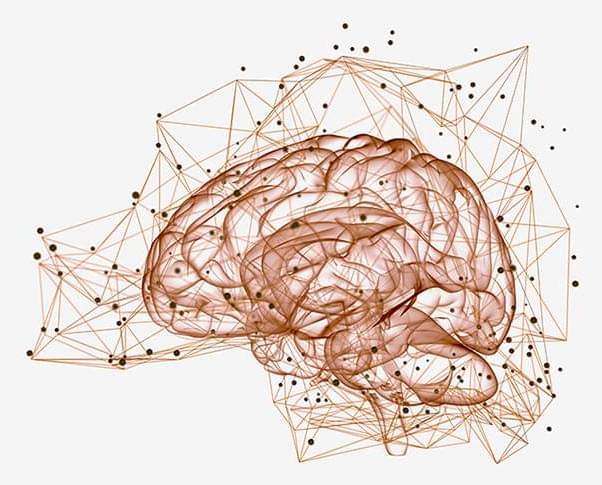The data indicated that circumcision affected most intensely the portions of the victim’s brain associated with reasoning, perception and emotions.



This is a significant development that brings hope to the one billion individuals with obesity worldwide. Researchers led by Director C. Justin LEE from the Center for Cognition and Sociality (CCS) within the Institute for Basic Science (IBS) have discovered new insights into the regulation of fat metabolism. The focus of their study lies within the star-shaped non-neuronal cells in the brain, known as ‘astrocytes’. Furthermore, the group announced successful animal experiments using the newly developed drug ‘KDS2010’, which allowed the mice to successfully achieve weight loss without resorting to dietary restrictions.
The complex balance between food intake and energy expenditure is overseen by the hypothalamus in the brain. While it has been known that the neurons in the lateral hypothalamus are connected to fat tissue and are involved in fat metabolism, their exact role in fat metabolism regulation has remained a mystery. The researchers discovered a cluster of neurons in the hypothalamus that specifically express the receptor for the inhibitory neurotransmitter ‘GABA (Gamma-Aminobutyric Acid)’. This cluster has been found to be associated with the α5 subunit of the GABAA receptor and was hence named the GABRA5 cluster.
In a diet-induced obese mouse model, the researchers observed significant slowing in the pacemaker firing of the GABRA5 neurons. Researchers continued with the study by attempting to inhibit the activity of these GABRA5 neurons using chemogenetic methods. This in turn caused a reduction in heat production (energy consumption) in the brown fat tissue, leading to fat accumulation and weight gain. On the other hand, when the GABRA5 neurons in the hypothalamus were activated, the mice were able to achieve a successful weight reduction. This suggests that the GABRA5 neurons may act as a switch for weight regulation.

A paper published in Nature Communications shows that when neurons are given information about the changing world around them (task-related sensory input) it changes how they behave, putting them on edge so that tiny inputs can then set off ‘avalanches’ of brain activity, supporting a theory known as the critical brain hypothesis.
The researchers, from Cortical Labs and The University of Melbourne, used DishBrain – a collection of 800,000 human neural cells learning to play Pong.
It is the strongest evidence to date in support of a controversial theory of how the human brain processes information.
DishBrain reveals how human neurons work together to process information.

In a study of brains from contact sport players who died before reaching 30, more than 40% had chronic traumatic encephalopathy, oXavier?
The findings confirm that CTE can occur even in young people, but more work is needed to determine how CTE relates to clinical symptoms.
Millions of people worldwide get repetitive head impacts through various activities. These can lead to chronic traumatic encephalopathy (CTE), a progressive neurodegenerative disease that causes brain damage similar to that seen in Alzheimer’s disease. CTE has been reported in people as young as 17. The incidence of CTE in young people, however, is unknown.
An NIH-funded research team, led by Dr. Ann McKee at Boston University and VA Boston Health Care, analyzed 152 brains (141 male and 11 female) that were donated to a brain bank. The brain donors had a history of repetitive head impacts from playing contact sports and were younger than 30 years old when they died. Researchers examined the brains and surveyed the donors’ next of kin about clinical symptoms. Results were published in JAMA Neurology on August 28, 2023.
More than 40% of the donors (63 out of 152) had CTE based on established criteria. Nearly all cases of CTE were mild (stages 1 or 2 out of 4). Donors with CTE tended to be older than those without the disease. The most common cause of death among the donors was suicide, followed by unintentional drug overdose. The causes of death did not differ between those with and without CTE. Most of the donors with CTE were male, but one was female–a collegiate soccer player.

Now, scientists have a mathematical model that closely matches how the human brain processes visual information.
Scientists have confirmed that human brains are naturally wired to perform advanced calculations, much like a high-powered computer, to make sense of the world through a process known as Bayesian inference.
In a study published in the journal Nature Communications, researchers from the University of Sydney, University of Queensland and University of Cambridge developed a specific mathematical model that closely matches how human brains work when it comes to reading vision. The model contained everything needed to carry out Bayesian inference.

Researchers from the Netherlands Institute for Neuroscience have, for the first time, witnessed nerve plasticity in the axon in motion.
Our nerve cells communicate through rapid transmission of electrical signals known as action potentials. All action potentials in the brain start in one unique small area of the cell: the axon initial segment (AIS). This is the very first part of the axon, the long, thin extension of a nerve cell that transmits signals or impulses from one nerve cell to another. It acts as a control center where it is decided when an action potential is initiated before traveling further along the axon.
Previously, researchers made the surprising observation that plasticity also occurs at the AIS. Plasticity refers to the brain’s ability to create new connections and structures in order to scale the amount of electrical activity, which is crucial for learning and memory. AIS plasticity occurs during changes in brain network activity. The segment’s length can become shorter with excessive activity or longer with low activity. But how does this structure change, and how quickly does it happen? Amélie Fréal and Nora Jamann in the lab of Maarten Kole have, for the first time, observed in real-time how this adaptability functions within the axon and identified the molecular mechanisms behind this process.

A new review published in The Lancet Neurology by researchers at Mass General Brigham presents findings indicating that cardiovascular disease risk may be increased by traumatic brain injury (TBI). The review presented evidence of the long-term associations between TBI and cardiovascular disease noting that post-injury comorbidities, as well as neuroinflammation, and changes in the brain-gut connection may be culprits in the elevated risk compared to the general population.
“Despite decades of extensive traumatic brain-injury-focused research, surprisingly, there has been minimal progress in mitigating long-term outcomes and mortality following injuries. The cardiovascular effects of TBI may be a missing link in advancing our efforts to improve long-term quality of life and reducing mortality rates in TBI patients,” said first author Saef Izzy, MD, of the Stroke and Cerebrovascular Center of Brigham and Women’s Hospital. “We have the opportunity to identify and improve targeted screening for high-risk populations, build preventative care strategies and improve outcomes for survivors of TBI.”
While past research has exhibited there is a strong link between TBI and neurodegenerative conditions such as Alzheimer’s disease and dementia, decades of research has failed to understand the mechanisms that occur after a TBI that drive these diseases. Izzy and review co-authors now suggest that there may be non-neurological effects of TBI, including cardiovascular, cardiometabolic, and endocrine dysfunction that may act as intermediaries that contribute to neurological disorders that may appear decades later.

A letter, signed by 124 scholars and posted online last week, has caused an uproar in the consciousness-research community. It argues that a prominent theory describing what makes someone or something conscious — called the integrated information theory (IIT) — should be labelled as pseudoscience. Since its publication on 15 September in the preprint repository PsyArXiv1, the letter has resulted in some researchers arguing over the label and others worrying that it will increase polarization in a field that has grappled with issues of credibility in the past.
Decades-long bet on consciousness ends — and it’s philosopher 1, neuroscientist 0
“I think it’s inflammatory to describe IIT as pseudoscience,” says neuroscientist Anil Seth, director of the Centre for Consciousness Science at the University of Sussex near Brighton, UK, adding that he disagrees with the label. “IIT is a theory, of course, and therefore may be empirically wrong,” says Christof Koch, a meritorious investigator at the Allen Institute for Brain Science in Seattle, Washington, and a proponent of the theory. But he says that it makes its assumptions — for example, that consciousness has a physical basis and can be mathematically measured — very clear.
Researchers publicly call out theory that they say is not well supported by science, but that gets undue attention.

University of Basel.
People differ significantly in their memory performance. Researchers at the University of Basel have now discovered that certain brain signals are related to these differences.
While it is well known that certain brain regions play a crucial role in memory processes, so far it has not been clear whether these regions exhibit different activities when it comes to storing information in people with better or worse memory performance.
Having investigated this matter, a research team led by Professor Dominique de Quervain and Professor Andreas Papassotiropoulos has now published its results in the journal Nature Communications.

New research hints at a few ways fatty foods affect cells in the brain, a finding that could help explain the link between a high-fat diet and impaired memory – especially as we age.
The Ohio State University study in cell cultures found the omega-3 fatty acid DHA may help protect the brain from an unhealthy diet’s effects by curbing fat-induced inflammation at the cellular source.
Separate experiments using brain tissue from aging mice showed a high-fat diet may lead specific brain cells to overdo cell-signaling management in a way that interferes with the creation of new memories.